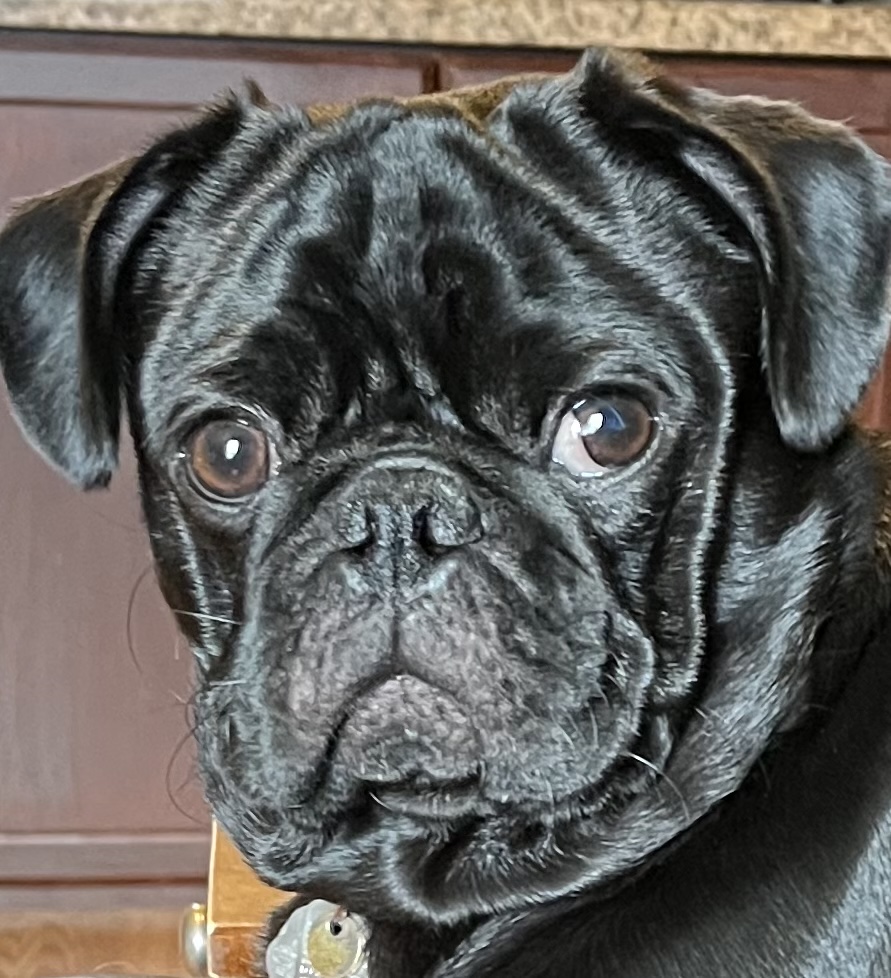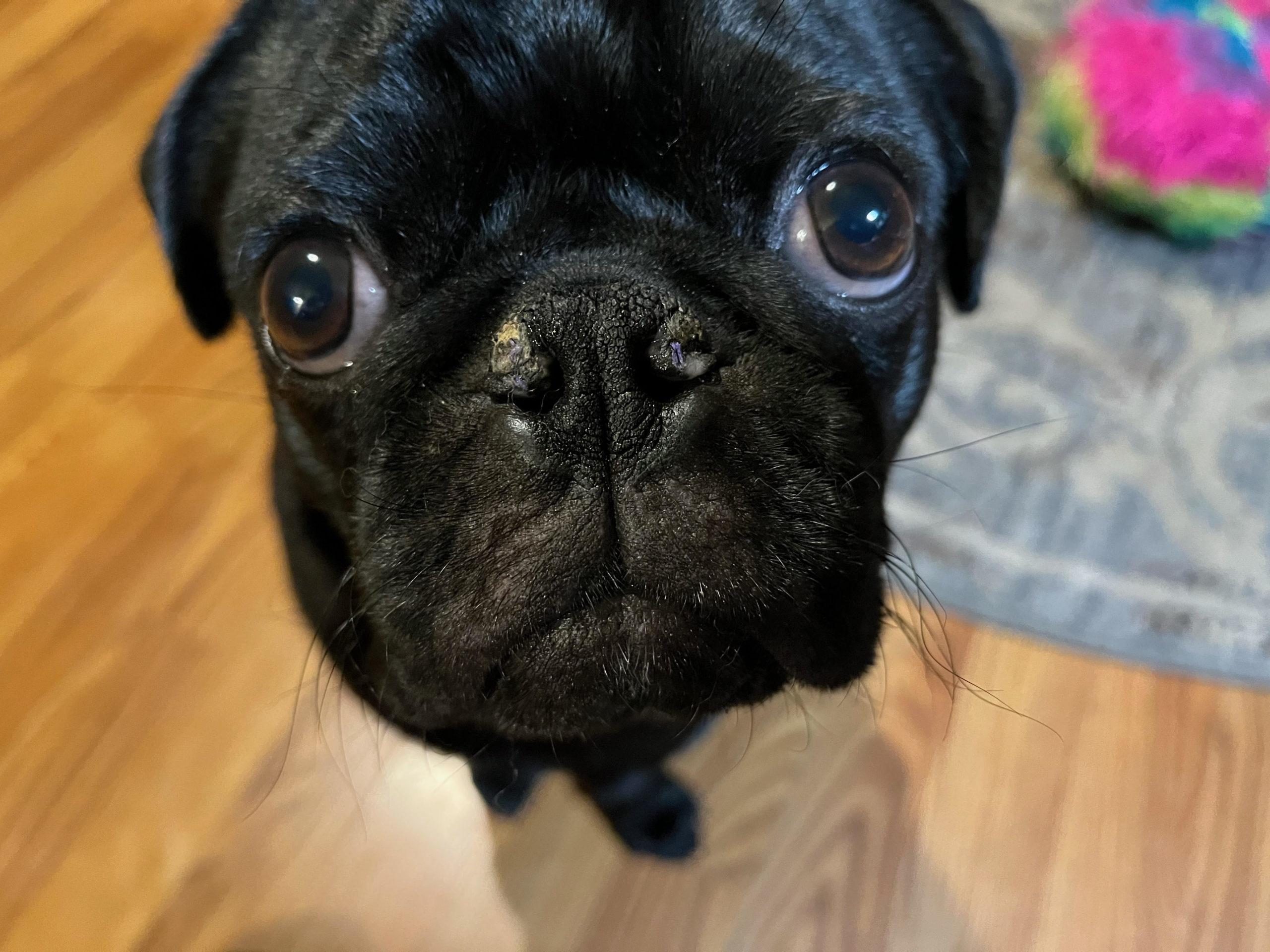Stanley, a 9 month old Pug, was struggling to breathe.
Because of his flat face, he had all the signs of dogs (and cats) with “brachycephalic syndrome,” such as bulldogs, Pekingese, and Boston terriers:
- difficulty breathing or catching his breath by day.
- some snoring at night.
- at night, “he often sounded like he was strangling.”
“I even noticed that he would occasionally stop breathing for up to five seconds during his sleep” explained Stanley’s owner.
“These symptoms had increased as he got older, even though he was still under a year old.”
Brachycephalic syndrome entails 4 issues:
- A very small windpipe (trachea), which is not fixable.
- An elongated soft palate, which means that the back part of the roof of the mouth is too long. Because it covers the opening of the windpipe, it prevents oxygen flow. It also vibrates during sleep and causes snoring. The goal of surgery is to shorten the soft palate.
Newsflash: snoring is NOT normal in a dog.
- Saccules are normal fleshy structures at the entrance of the airway. When a dog struggles to breathe, saccules can be pulled out into the airway – and block the flow of oxygen. The goal of surgery it to remove them.
Think of them as pant pockets. When they’re normal, the pockets are going inward. Then they’re sticking out, the pockets are inside out.
- Stenotic nares, aka tiny nostrils, also prevent getting enough oxygen. The goal of surgery is to make them wider. I call it a nose job (aka rhinoplasty).
Stenotic nares are easy to see during the exam with the patient wide awake.

After we performed an exam under sedation, we confirmed an elongated soft palate and saccules that were sticking out.
So Stanley needed all 3 surgeries.
His owner writes: “I was nervous about Stanley undergoing surgery, especially considering his breed and that he was already having difficulty breathing. It helped calm me that HRVSS kept me informed before, during, and after surgery.”
Little Stanley went through anesthesia and surgery with flying colors.
This is him, 5 weeks after his nose job. He still has 1 (purple) stitch in place – which will fall off on its own.

After surgery, his owner LB writes:
“Stanley has been doing really well. (…) Two nights ago, I noticed that I could not hear him breathing. He was sleeping so peacefully. It was wonderful! I’ve had to check that he’s breathing while he’s sleeping because he’s so quiet now!
I’m definitely an advocate for brachycephalic surgery and for your practice. I love the way you communicated about everything before, during, and after Stanley’s procedure.”
In addition, “Five weeks after surgery, Stanley can run top speed and keep up with my daughter’s Dogue de Bordeaux mix without getting out of breath.”
Phil Zeltzman, DVM, DACVS, CVJ, Fear Free Certified

